
How to choose a Lychnis?
Based on various criteria of colour, size, soil type, and use.
Contents
Half-romantic, half-natural, a touch wild, discreet yet very present, the lychnis is an annual or perennial plant that forms beautiful bushes brimming with flowers. Your garden will gain in brightness, delicacy, and lightness. Whether called campion, meadow pink, or cuckoo flower, lychnis thrive, depending on the varieties, in both poor, dry soils and by the water’s edge. Ranging from 10 to 80 cm in height, lychnis bloom in various shades of pink, from very pale to magenta, as well as in white, and even red or orange for some hybrids. In short, it’s hard to make a choice… We therefore help you select the best variety of lychnis based on your needs, your colour preferences, and the nature of your soil.
According to the colour of the flowers
The five-petalled flowers of lychnis, perched on long petioles, exude great delicacy. Swaying with the winds, they create colourful, dynamic displays in your borders, beds, and rockeries. You can, according to your tastes and desires, paint your garden with a wide palette of pink, white, and even red and orange, colours achieved through hybridization.
A pink flowering
Pink is the most common colour among lychnis, a hue that comes in various shades, from light to dark. For instance, Lychnis flos-cuculi displays a pale pink, while the pink of Lychnis viscaria ‘Plena’ is more intense. The double flowers of Lychnis viscaria ‘Splendens’ are a brighter pink, leaning towards tyrian and magenta. Magenta is also worn by Lychnis coronaria and Lychnis coronaria ‘Gardener’s World’, which truly attract all eyes with their striking colour.
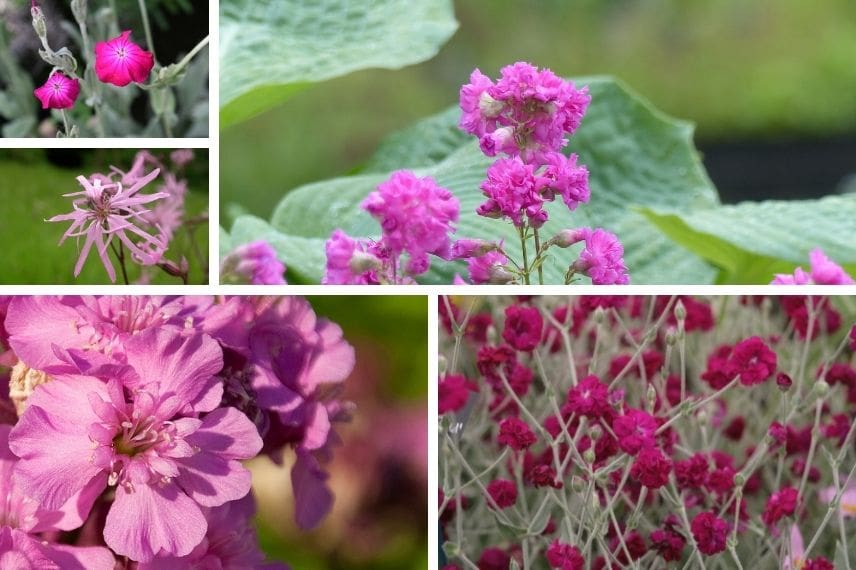
Life in pink with lychnis coronaria, flos-cuculi, viscaria ‘Splendens’, viscaria ‘Plena’ and coronaria ‘Gardener’s World’
As for the splendid Lychnis coronaria ‘Angel’s Blush’, it bridges the gap between pink-flowering lychnis and those with white flowers, as it showcases both shades: this coquelourde displays an angelic pink at its centre, surrounded by a virginal white.
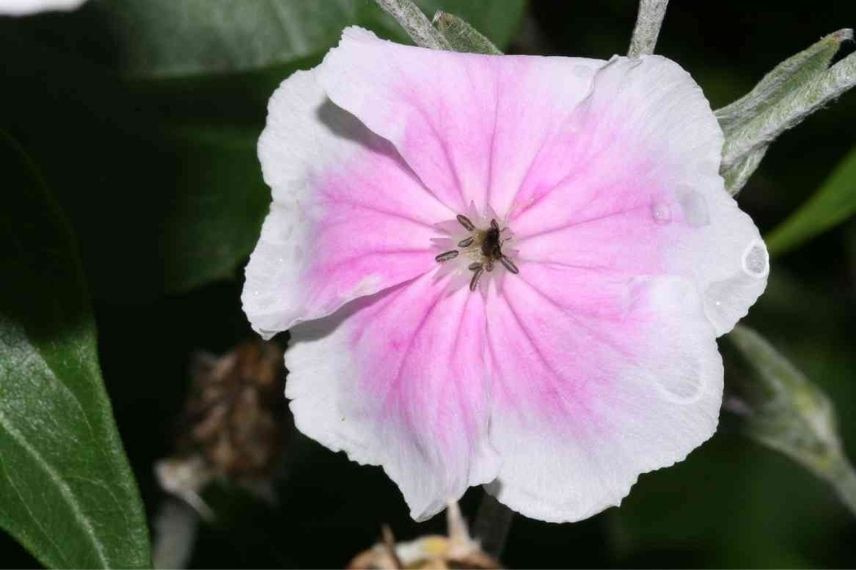
The extraordinary Lychnis coronaria ‘Angel’s Blush’
A white flowering
White suits lychnis very well. The Lychnis chalcedonica ‘Alba’, also known as Jerusalem Cross, is of great elegance. The white flowers of the garden coquelourde find a prominent place in vicarage gardens. And those of the spring carnations display their originality: the flowers of Lychnis flos-cuculi ‘Henri’ are very double and very shaggy, while those of Lychnis flos-cuculi ‘White Robin’ are all about discretion and finesse.
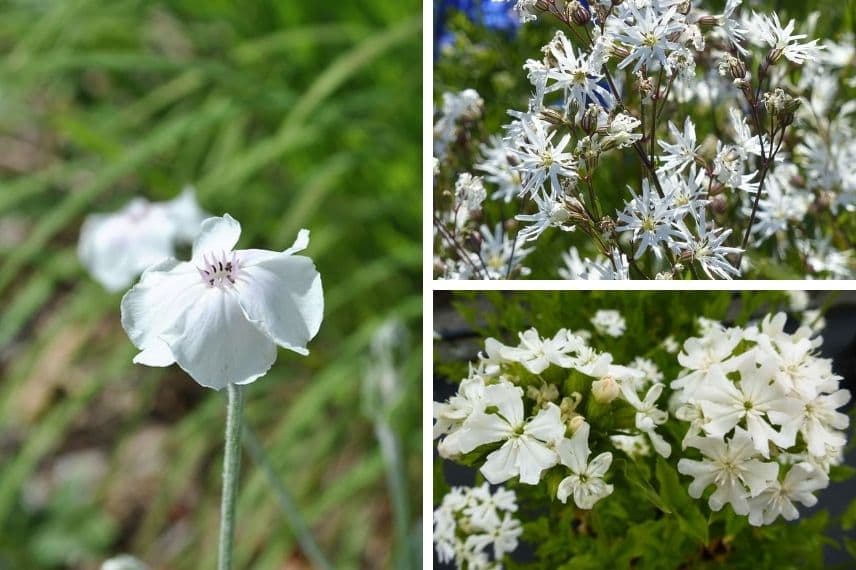
Lychnis coronaria ‘Alba‘, Lychnis flos-cuculi ‘White Robin’ and Lychnis chalcedonica ‘Alba’
A red and orange flowering
Two lychnis stand out with a red-orange flowering, more or less vivid: Lychnis chalcedonia ‘Croix de Malte’ and Lychnis arkwrightii ‘Vesuvius’.
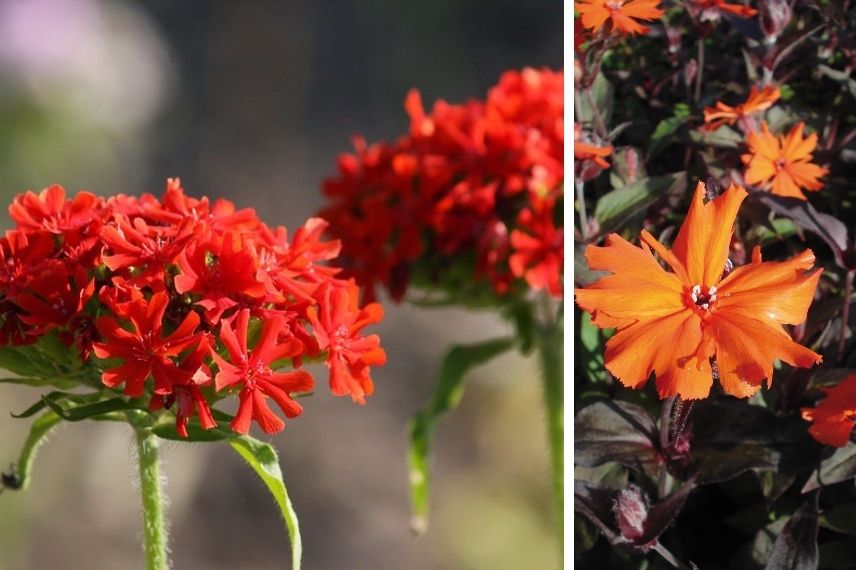
Lychnis chalcedonia ‘Croix de Malte’ and Lychnis Arkwrightii ‘Vesuvius’
Depending on the shade of the foliage
Some varieties of lychnis feature stunning silver-grey foliage, while others display rather green leaves, and still others take on a purple hue.
A Grey Foliage
Far from being dull or drab, the grey colour of lychnis foliage enhances and tempers the pink of the flowers. This grey, with its delightfully silvery reflections, also adds a touch of elegance to flower beds, provided it is used in small doses.
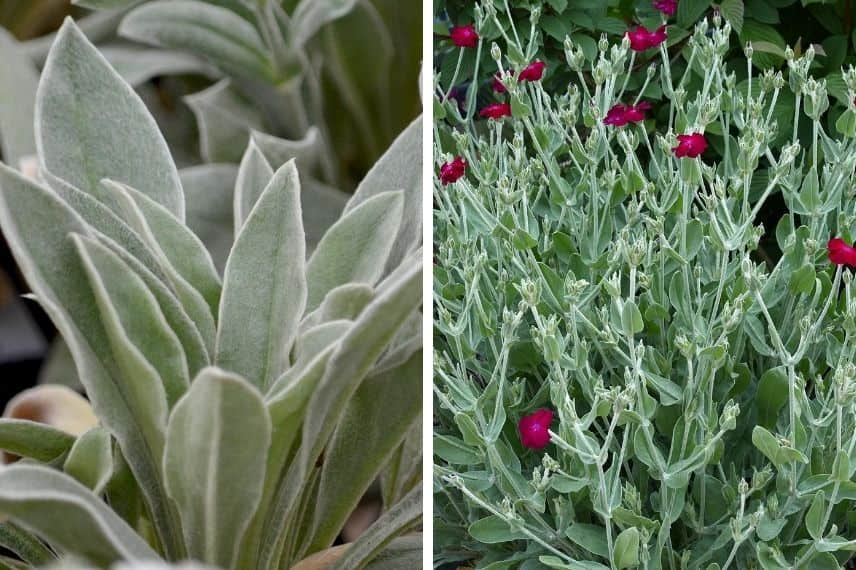 The lychnis coronaria, including Lychnis coronaria ‘Atrosanguinea’, has silver-grey foliage
The lychnis coronaria, including Lychnis coronaria ‘Atrosanguinea’, has silver-grey foliage
Overall, it is the lychnis of the species coronaria that possess the greyest foliage, which is also soft and downy due to tiny hairs covering it. For example, one cannot overlook Lychnis coronaria ‘Atrosanguinea’, whose light grey leaves highlight the exceptional carmine red of its flowers.
A Green Foliage
Several shades of green colour the foliage of lychnis. The foliage of the small Lychnis alpina is rather dark green, while that of Lychnis chalcedonica ranges from light green to bright green. As for Lychnis viscaria ‘Splendens’, it boasts a magnificent bronze green that enhances the tightly packed clusters of colourful flowers.
A Purple Foliage
Once again, Lychnis Arkwrightii ‘Vesuvius’ stands out with its striking purple foliage that harmonises beautifully with the red-orange flowering. The Lychnis flos-cuculi also dons purple, but on the stems. As for the foliage, it is bright green.
Discover other Lychnis
View all →Available in 0 sizes
Available in 0 sizes
Available in 2 sizes
Available in 2 sizes
Available in 1 sizes
Available in 1 sizes
Available in 2 sizes
Available in 1 sizes
Available in 2 sizes
Available in 2 sizes
According to height
Lychnis includes several species that are quite different from one another, particularly in terms of height. For instance, Lychnis alpina rarely exceeds 10 to 15 cm, a height that makes them ideal plants for rockeries, paving, or even pot cultivation.
Of medium height, other lychnis form dense cushions of flowers. For example, Lychnis viscaria ‘Plena’ reaches 40 to 50 cm and produces a wide tuft of slightly sticky stems, earning it the nickname “catchfly.” As for Lychnis flos-cuculi, also known as “cuckoo flowers” because their flowering coincides with the first calls of the cuckoo, they reach a maximum height of 50 cm.
Finally, Lychnis coronaria produces stems up to 80 cm depending on the soil type. They are perfect for creating lovely country-style bouquets or for filling a border alongside rosemary or lavender, which require the same growing conditions as they do.
Depending on the flowering period
In the family of lychnis, there are two schools of thought: those that flower in spring and those that prefer summer to unleash their colourful inflorescences. Thus, the alpine lychnis offers bouquets of flowers with frilled petals from April to June. The Lychnis flos-cuculi waits until May to adorn itself with its colourful or white flowering.
Then, the other lychnis take over to produce flowers until August, and even into September for the Lychnis coronaria.
By varying the varieties, it is possible to achieve flowering beds or borders from early spring to late summer.
According to the type of soil
One of the main advantages of lychnis is that there are varieties suited to completely different soils. This allows them to be planted in various areas of the garden with soils that are more or less dry, or even quite moist.
In general, the garden campion (Lychnis coronaria) grows easily in dry, poor soils and in the driest areas of gardens. Only calcareous or clay soils can hinder its growth. On the other hand, it withstands drought perfectly.
Other species of lychnis, such as viscaria, prefer cooler soils, being native to the cliffs and rocky outcrops of high mountain areas. It is the quintessential alpine rock garden plant that, conversely, does not appreciate calcareous soils. Lychnis flos-jovis has the same soil preferences.
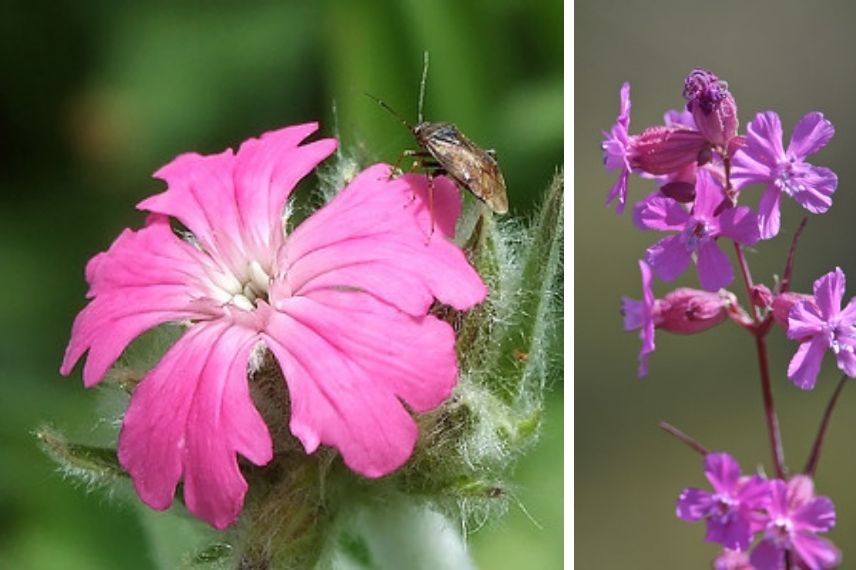
Lychnis viscaria and lychnis flos-jovis prefer cool soils
Other lychnis greatly prefer clayey and heavy soils, rich in moisture. Originating from Eastern Europe, Lychnis chalcedonia enjoys constantly moist soils and low winter temperatures. And Lychnis flos-cuculi, or meadow pinks, which naturally thrive in marshes and turf moors, will require a rich, moist soil, such as a bank or the edge of a pond.
Depending on the use in the garden
The small Lychnis alpinas will happily enhance a rockery or an alpine wall, paired with aubrietes (Aubrieta) that form a carpet of lovely mauve or violet flowers, wall bellflowers (Campanula poscharskyana), or even saxifrages and pulsatillas. All can withstand challenging weather conditions and add a wild touch to a garden.
For borders and beds with a slightly wild and natural appearance, Lychnis viscaria stands out just like garden catchflies. In the company of phlox and bellflowers, they will be planted in masses to provide volume.
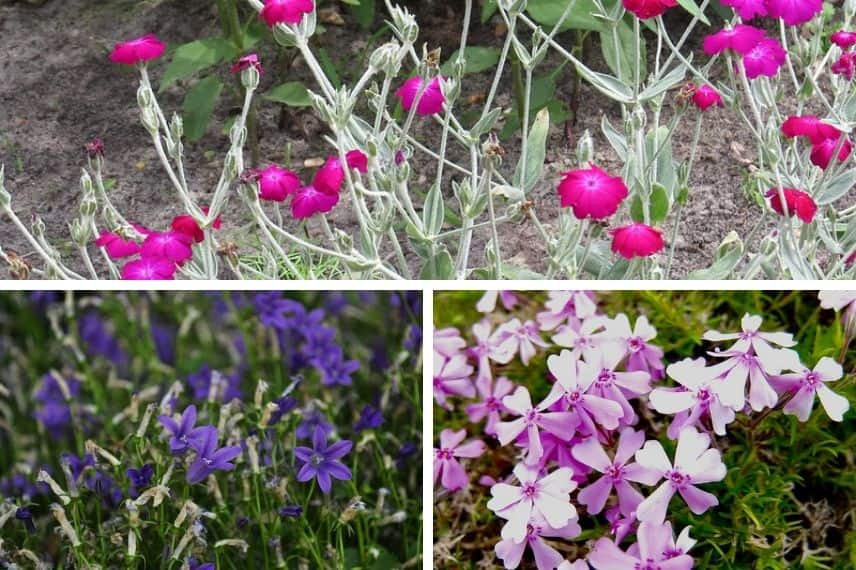
Lychnis viscaria forms lovely dense clumps alongside phlox and bellflowers
Finally, reserve Lychnis flos-cuculi for the edges of ponds, although they can adapt to all types of soil, alongside astilbes, heucheras, and hostas, or the magnificent meadowsweet or filipendulas.
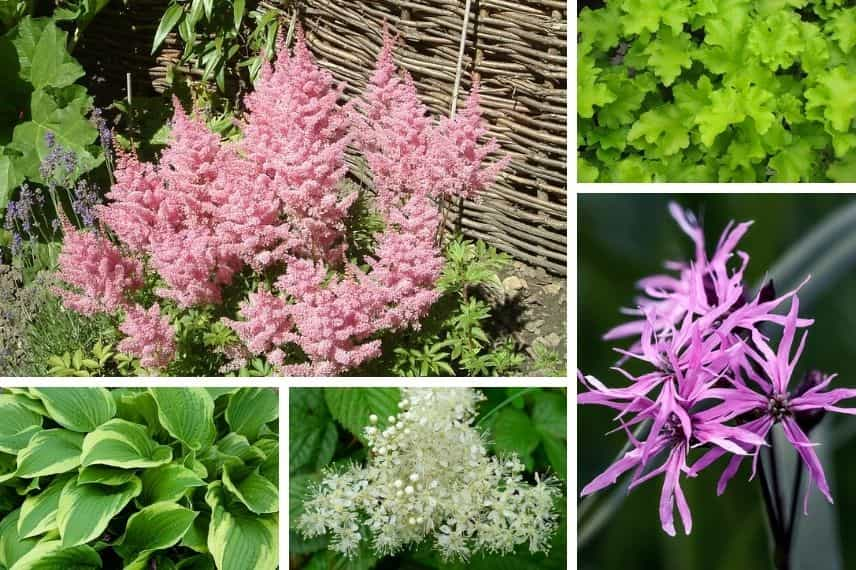
By the pond, Lychnis flos-cuculi thrives alongside astilbes, filipendulas, and hostas and heucheras for the foliage
- Subscribe!
- Contents
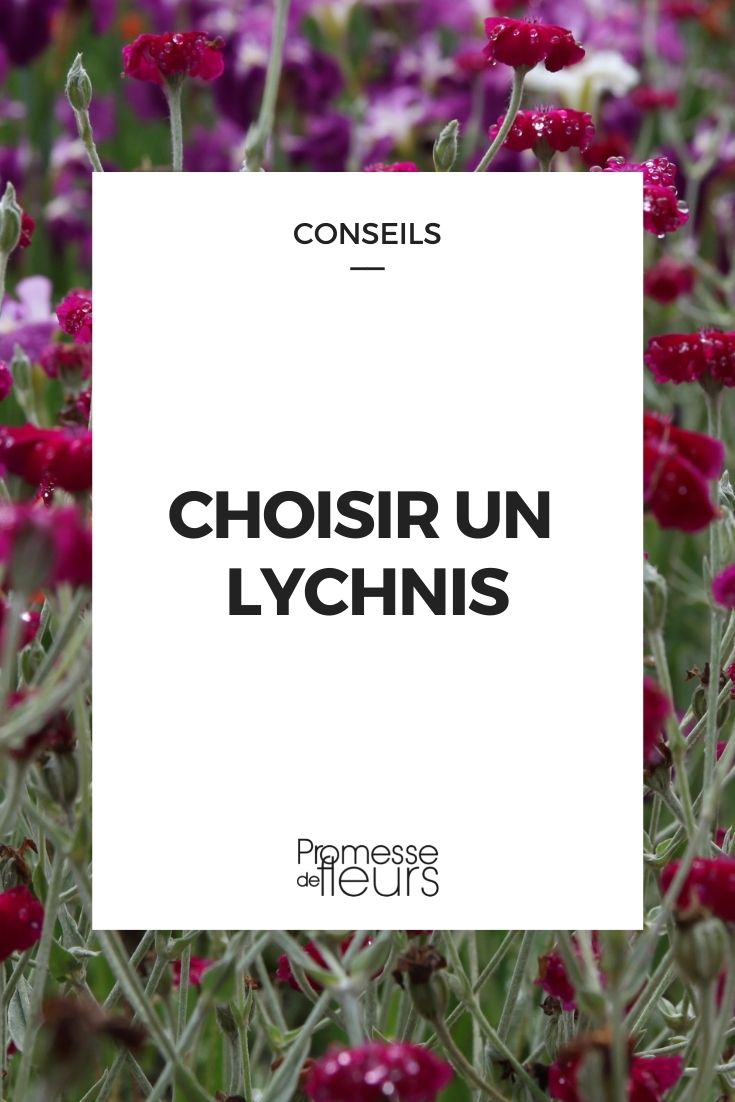































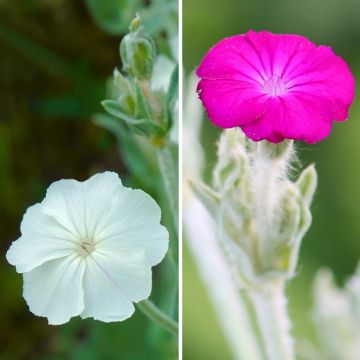

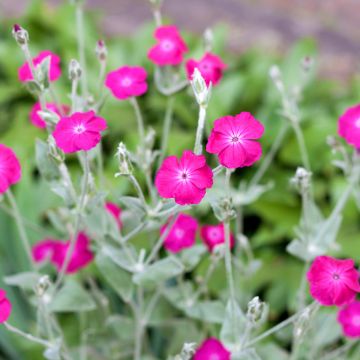
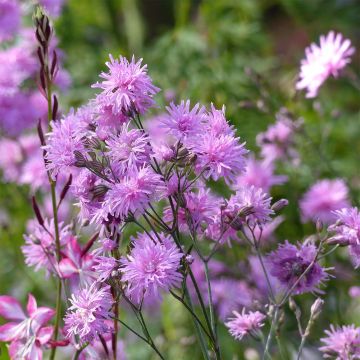

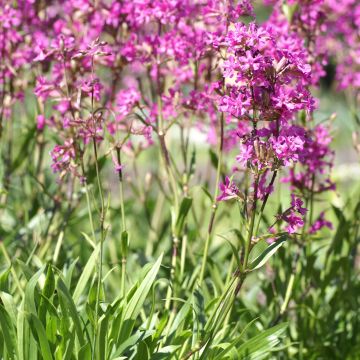
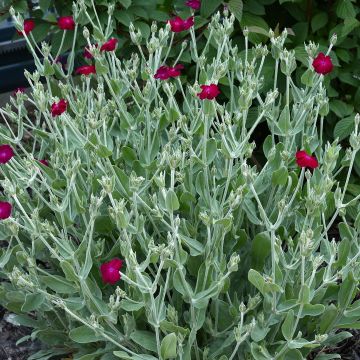
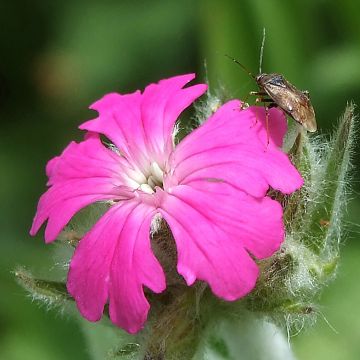


Comments